Fossicking Fun
On a quest
I’m someone who needs ‘a quest’, be it an amazing rock or shell, a photo of an elusive bird, or a bargain at a garage sale. It’s not necessarily about the acquisition. It’s about the success of the challenge.
The Wheelbarrow Way, from Atherton to Herberton, Irvinebank, and Chillagoe (all 1800s mining towns), reignites the desire for fossicking rocks, minerals, gemstones and fossils. The miners that proceeded me were looking for tin, silver, gold and copper. The museums at Herberton and Irvinebank, and Pete’s Shed show the history of the search for minerals in the area. I see rock specimens to inform me what I am looking for. The excitement intensifies. I clamber over the countryside inspecting many of these old mines, being careful to avoid the open shafts dotted about the hills.
At Chillagoe, a limestone Karst area, it is easy to find specimens of limestone and marble. I also find crinoid and coral fossils in some limestone samples from the great shallow basins of the Devonian Period, 380 million years ago, that extended from here to just north of Charters Towers. Once buried, these basins have resurfaced with the earth’s movements over time, and then erosion.
I also pull out my detector to run it over the site of the old shanty town from the 1890s just outside the main town. I never find anything of value but it you don’t try you never know. The area has been bulldozed, the ground is rock hard but I find pieces of detritus from back in the day – bully beef, herring, and match tins, bits of glass and pottery. I’m interested in finding imprints of brands and production places. I’m fascinated by the purple/mauve glass and the story behind it. It has changed to that colour in the sun as a result of manganese being used in its production.
I head further west past O’Briens Creek, a topaz location. These days I’m after something I can speck on top of the ground. No more hard digging for me. The same sentiment at Georgetown, a gold area. Detecting gold is hard work. I’ve detected in the past in the area at Gilberton Station but with no luck. I haven’t the stamina or the perseverance. Georgetown has a wonderful rock and agate museum. It always gets the heart racing.
I stop at many dry river/creek crossings if I see a rocky surface. Some of my best finds have been exposed during the wet season and are just sitting there waiting for me. I’m on the look-out for crystals, jasper, agate – anything that stands out as different may be a keeper. A rock may just ‘speak to me’ by its colour, shape, patterning, or how it feels in my hand. I may want to reveal its make-up by cutting it with the diamond saw at the club. Although when I bring my finds back to the Lapidary Club I belong to in Hobart they often refer to them laughingly as ‘leaverites’ – leave them right there!
Next destination is Agate Creek. I can never drive past there. You will always find bits of agate laying on the surface. Once you could find beautiful whole agates that when cut revealed magnificent pinks and blue patterning, or yellow and gold. These days you need to dig hard and deep to retrieve these, unless you are very lucky
I pick up lots of pieces to put in the tumbler when I return home. By tumbling rocks with a series of grits and then a polish of tin oxide they become smooth and the colour is highlighted. Some specimen rocks I find might come up nicely with some grinding, flat lapping (holding the rock on a flat turn-table with different grits (coarse to fine) and polishing. It can take hours to get a rock revealing its best self.
I turn south to head to Fletcher Creek and the Burdekin River, access about thirty kilometres north of Charters Towers. This area is part of the same shallow basins as Chillagoe. While there I had also purchased an incredibly informative book (see below) that is about rock formations in national parks but can be used to research likely areas that are not. I have been given a tip-off and mud-map of a likely spot for fossils in the area and yes, I did find two spots – one with collectable specimens along Fletcher Creek and another location at Big Bend on the Burdekin with huge uplifts of limestone plates to gaze on with awe.
To think you are looking at sea creatures such as stromoporoids, corals, bivalves, gastropods, conodonts, trilobites, brachiopods, stems of crinoids (sea-lillies) 380 million years old. Before there was life on land. Unbelievable!
The Troopie is getting heavier. I may restrain myself for a bit until I arrive further south at the Queensland opal fields. I just may …
A superb reference book For Northern Queensland – for observation, not collecting:
‘Rocks and Landscapes of the National Parks of Northern Queensland.’
Warwick Wilmott, Geological Society of Australia (Q’land. Division) 2009


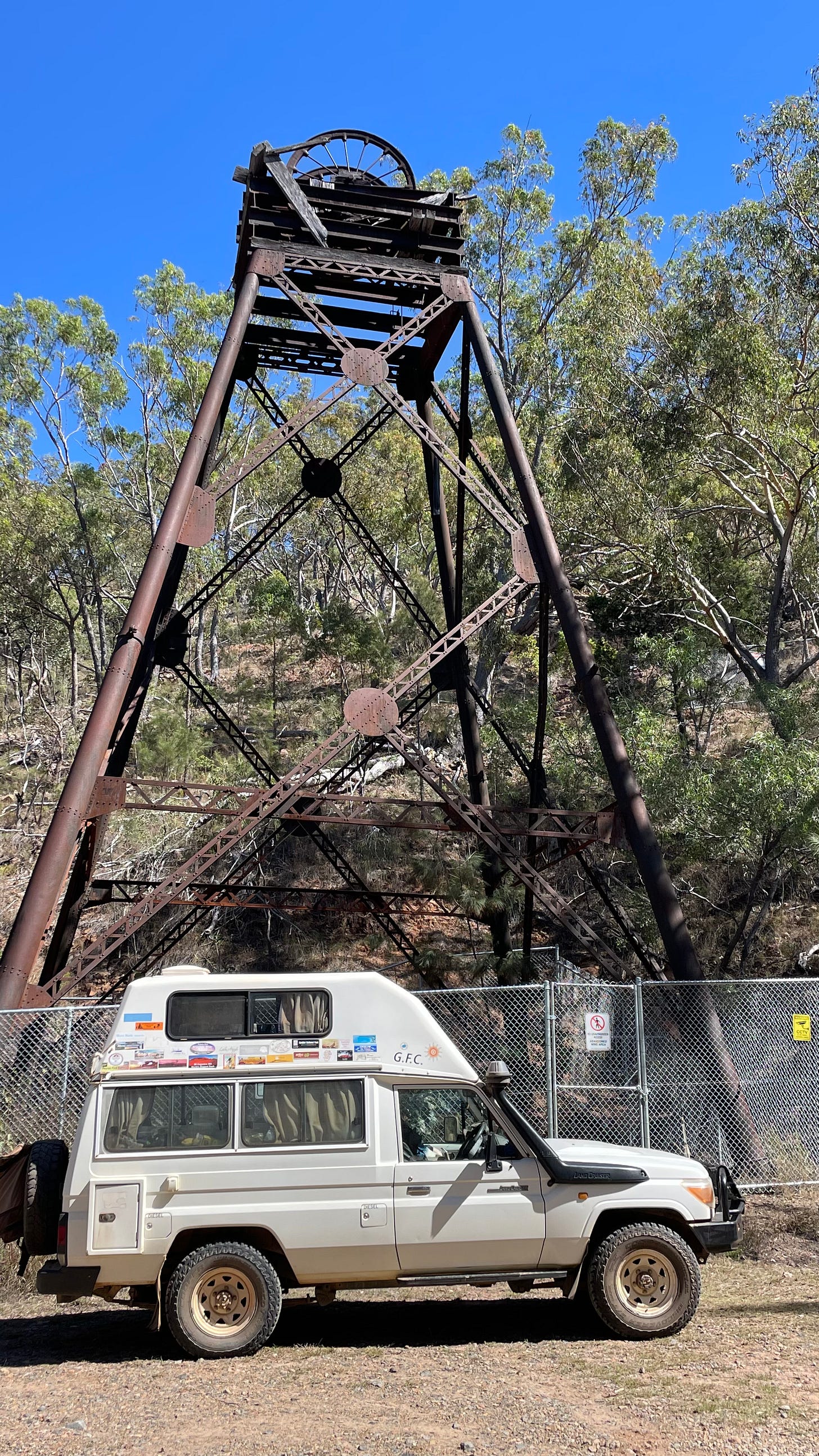
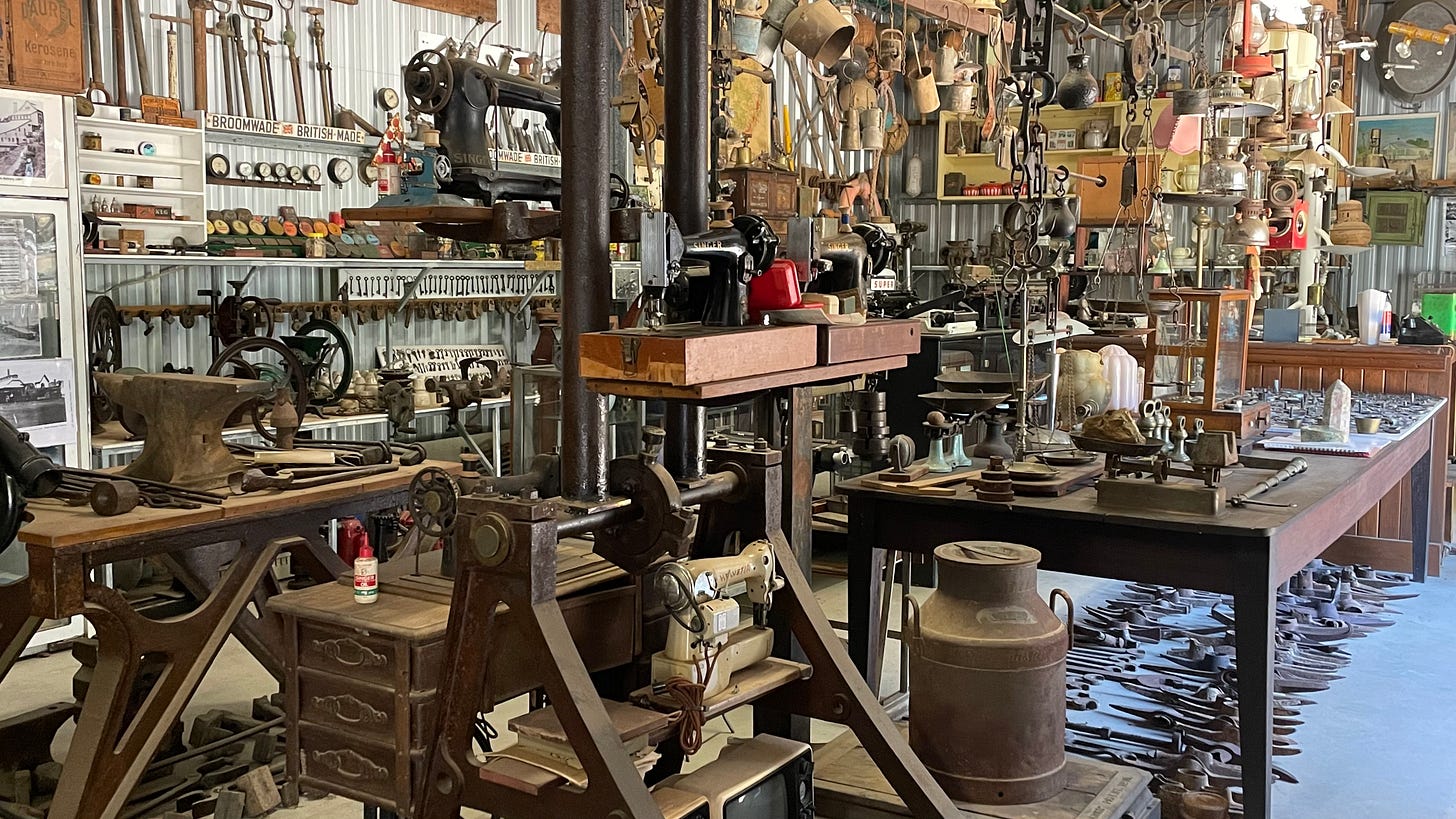
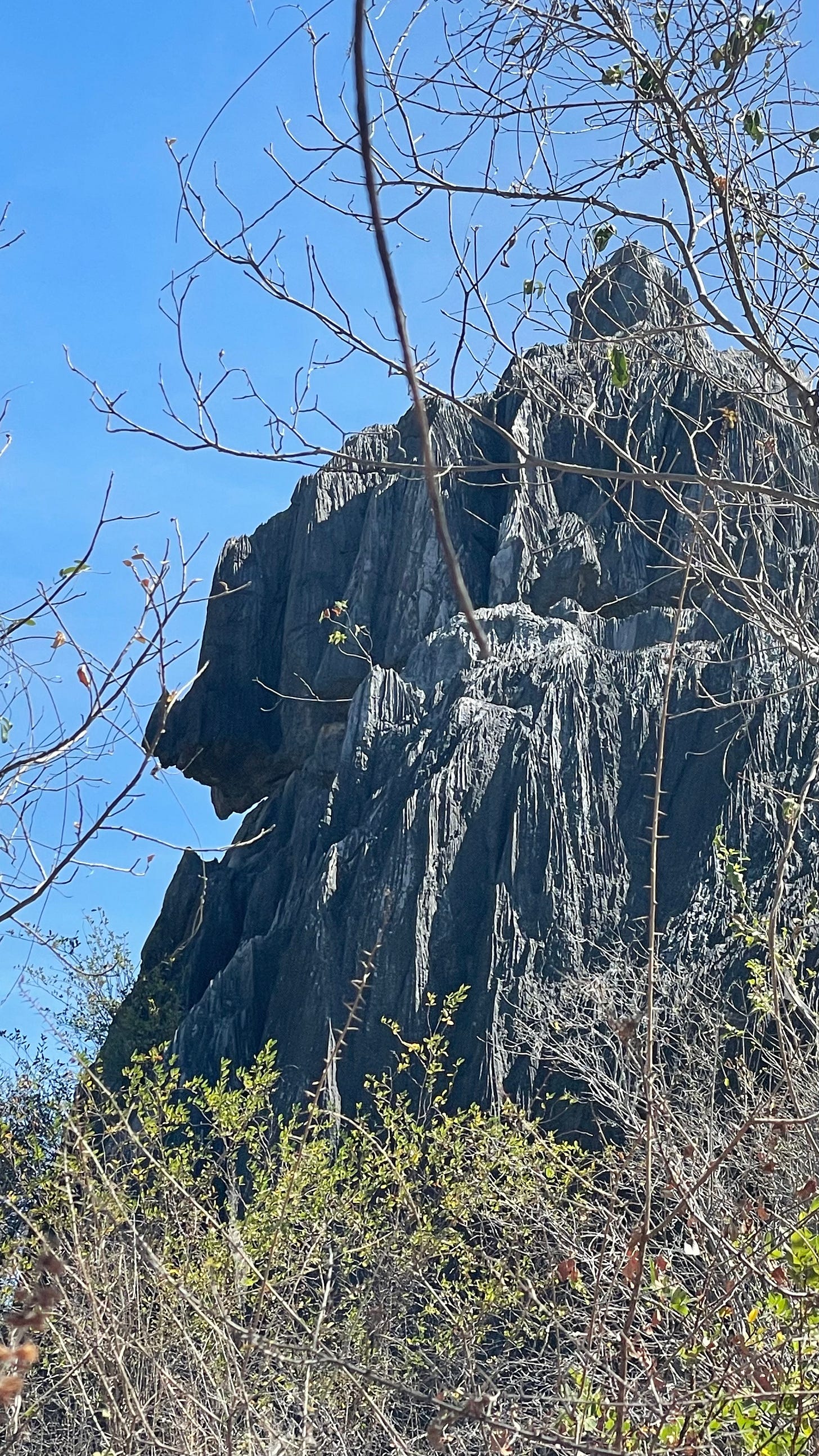
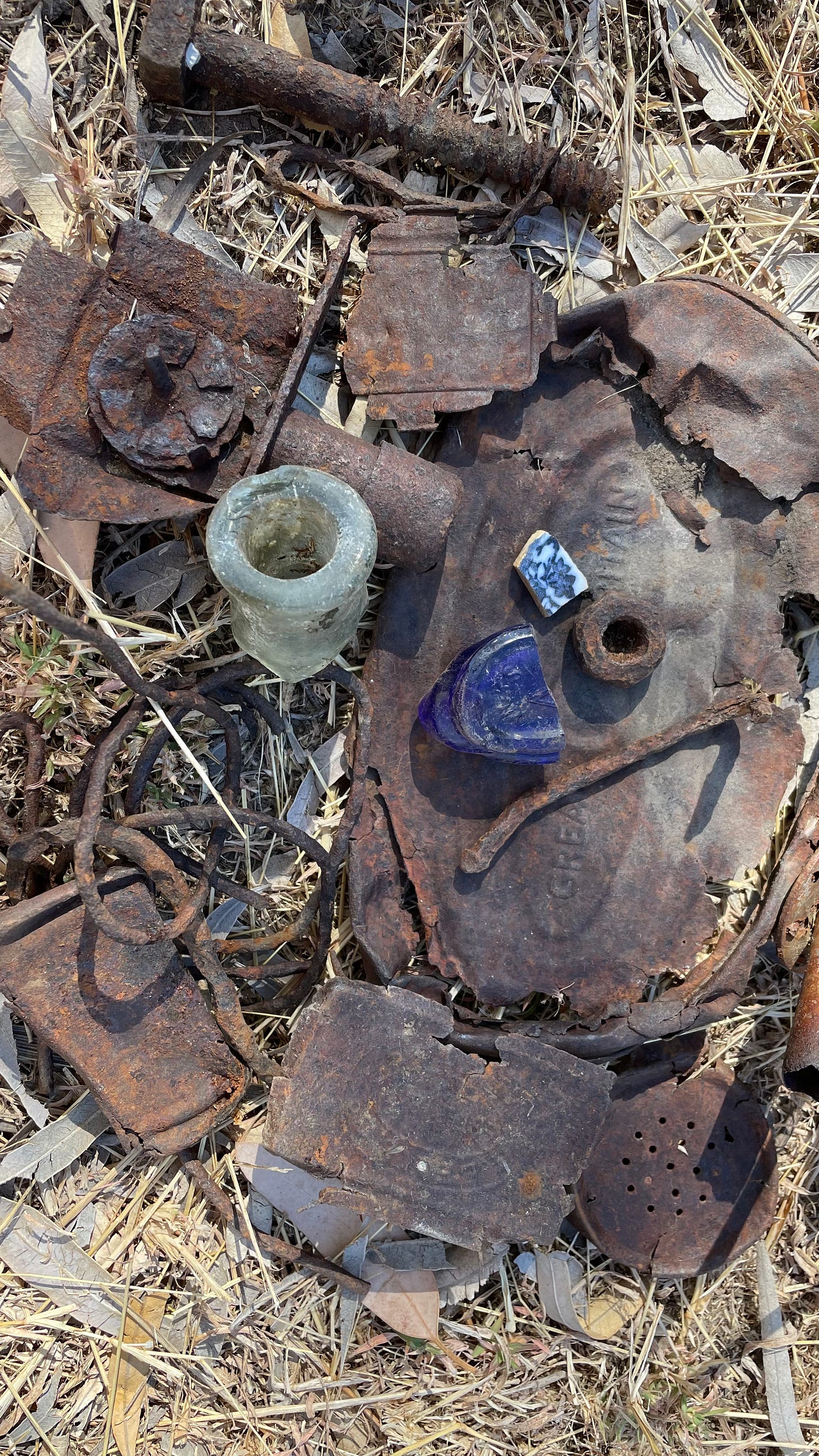
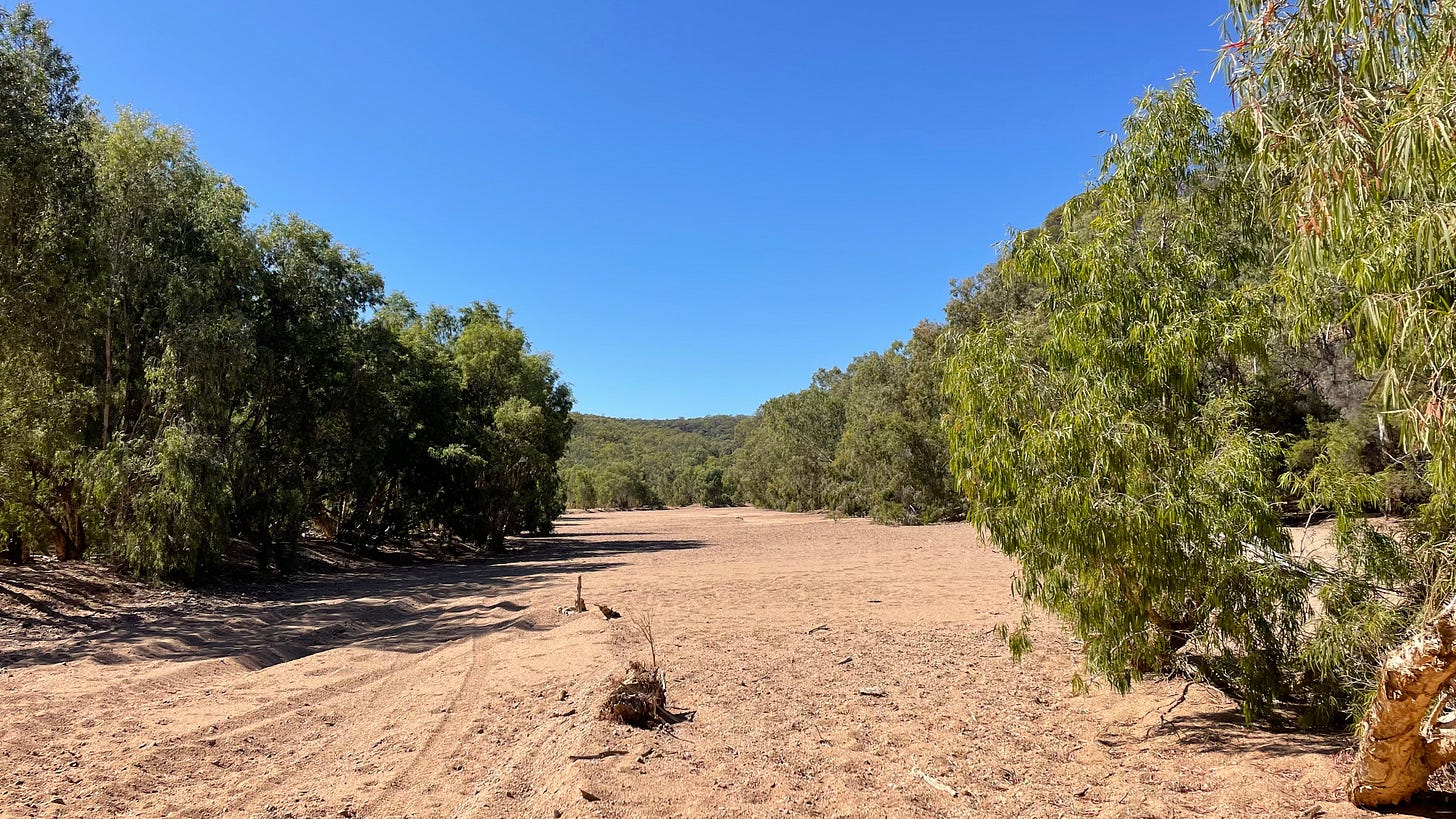
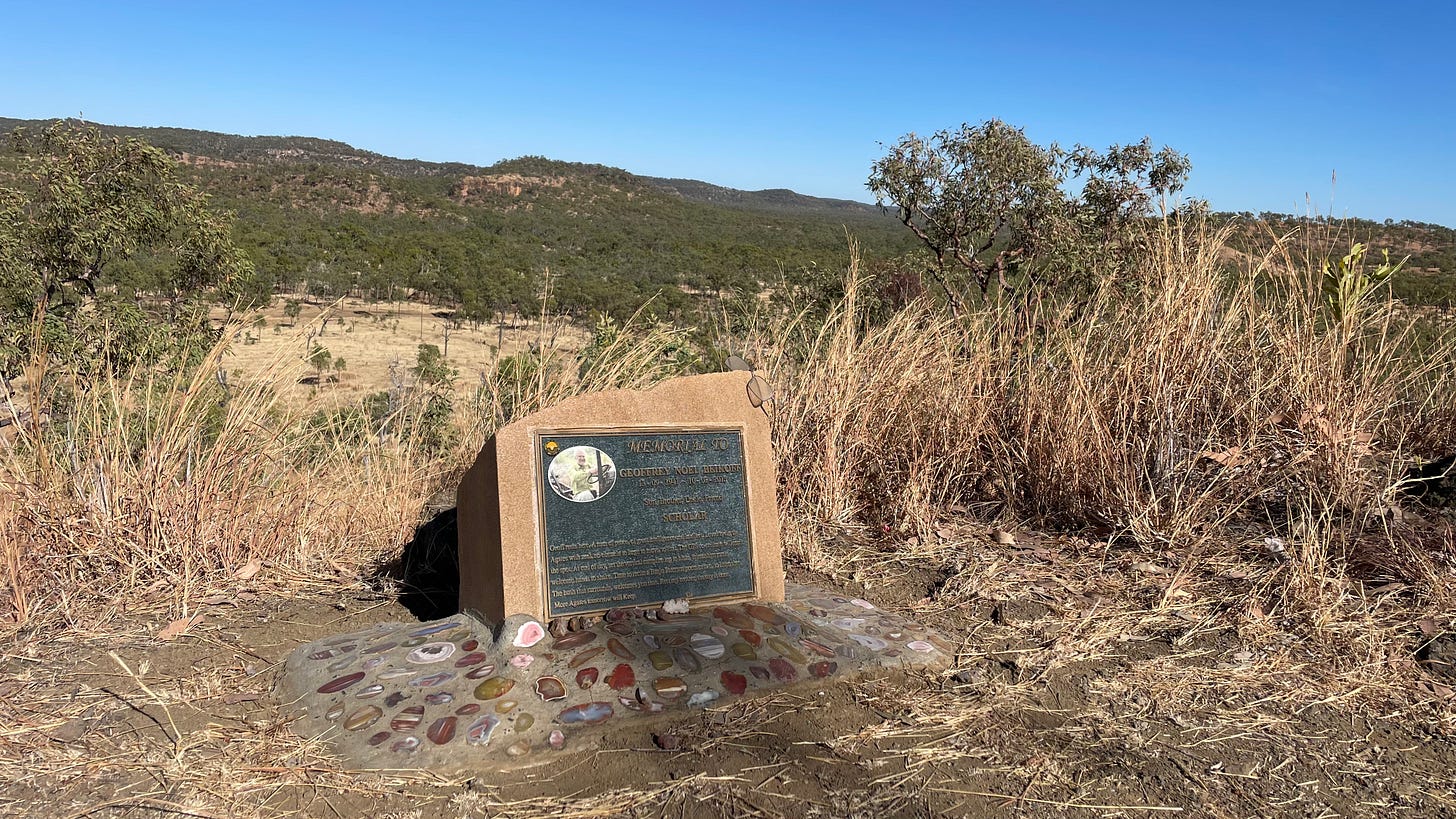
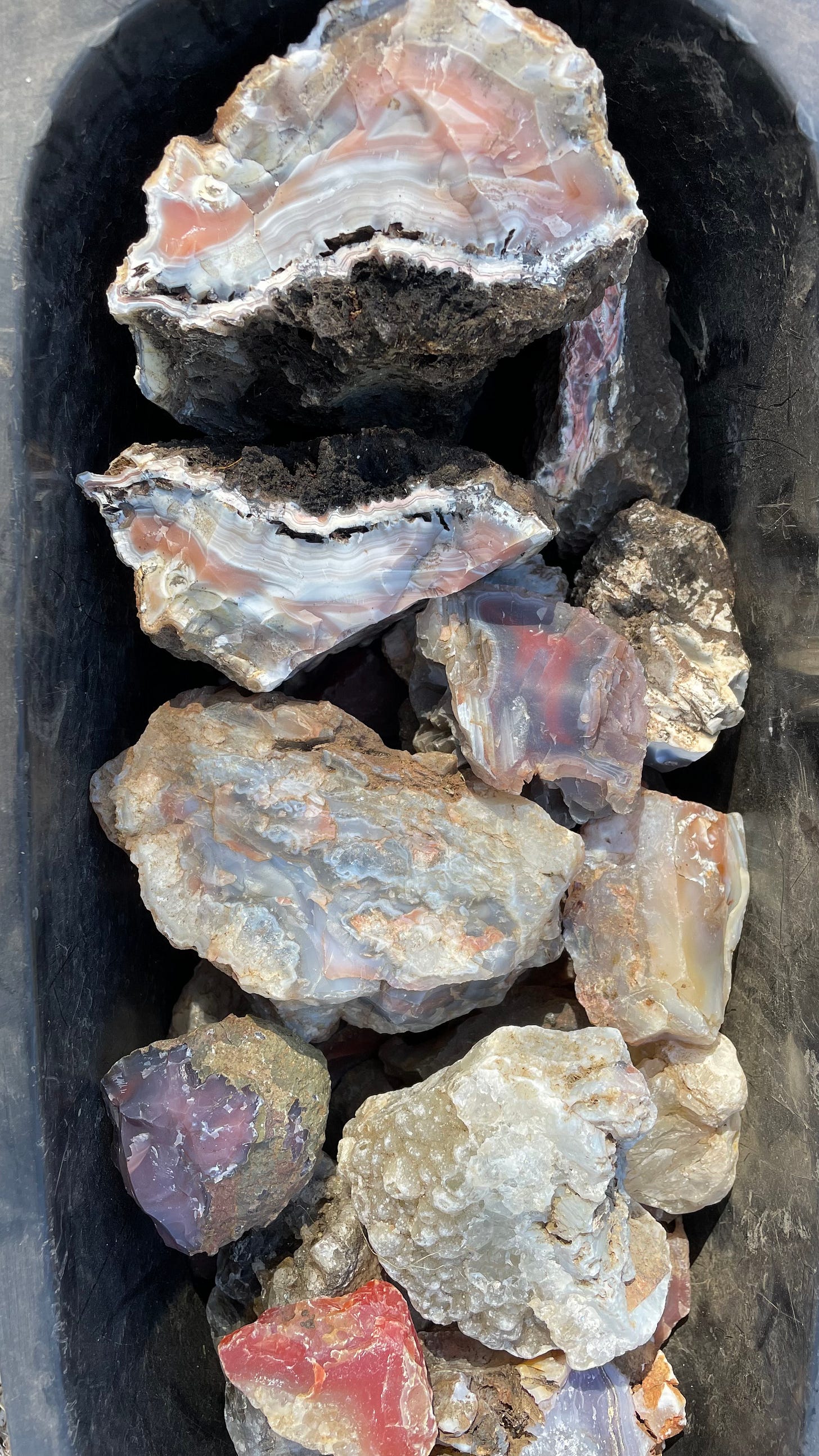
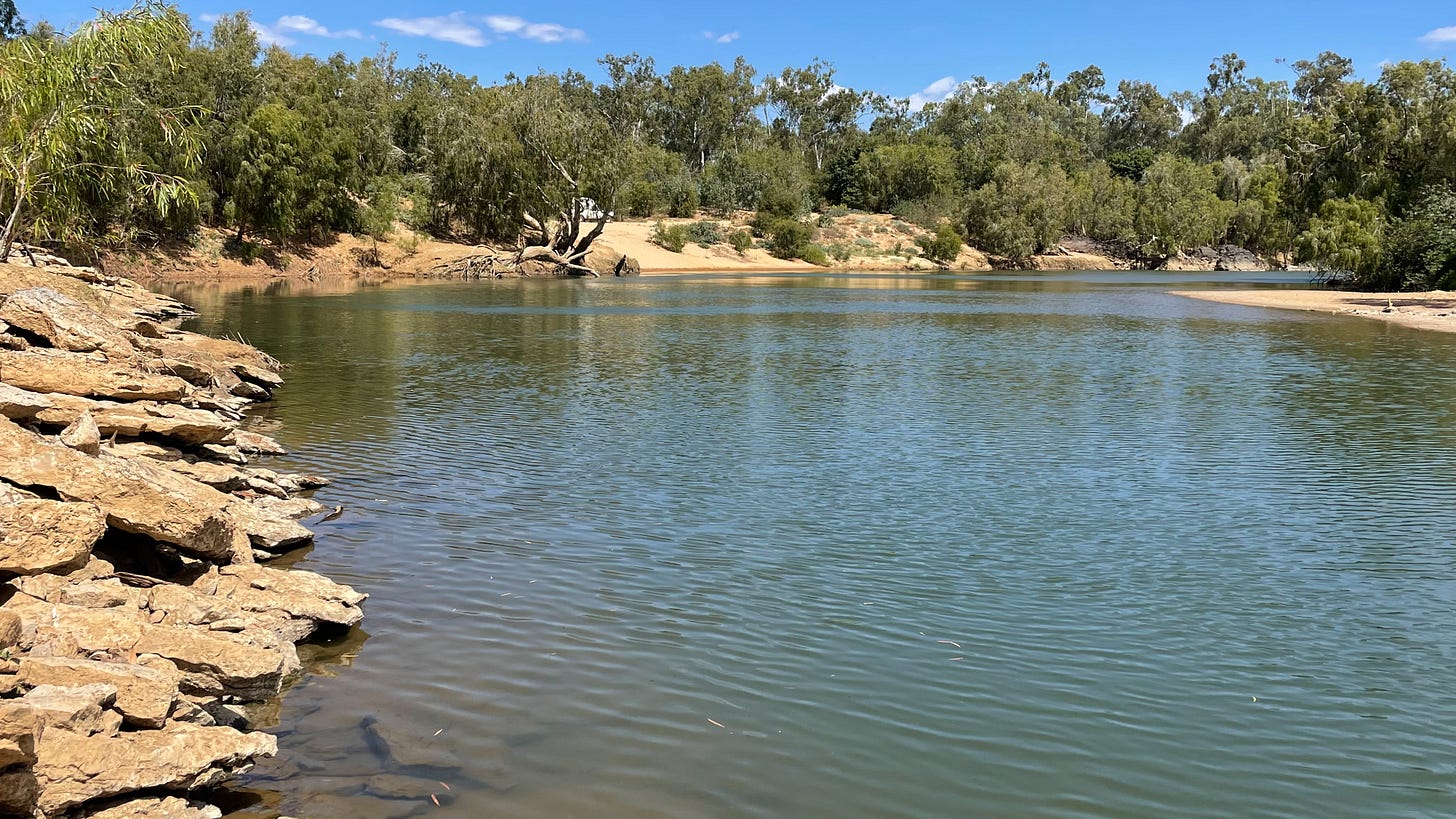
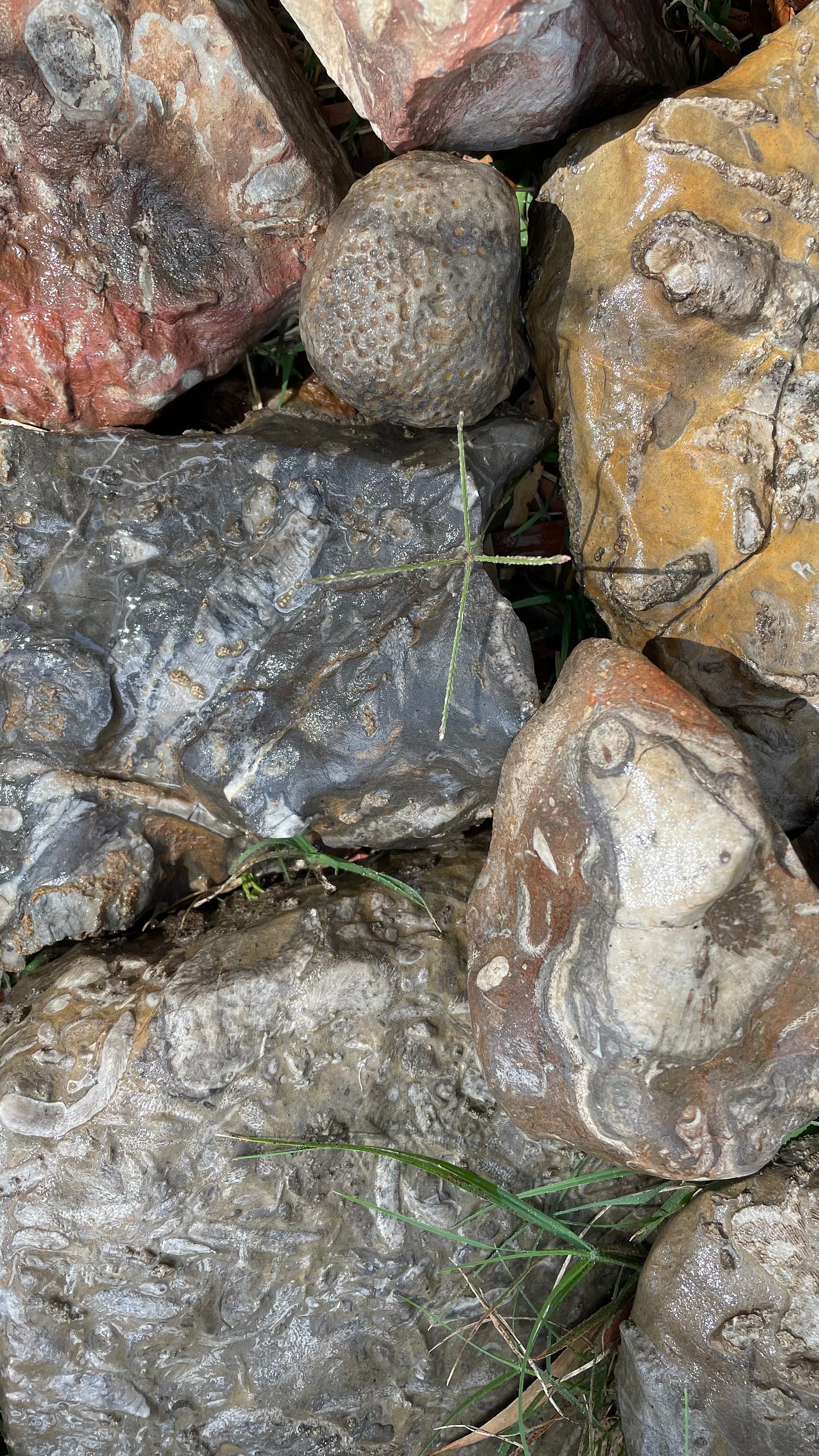
Hey, Lou! Fascinating as always to follow your adventures. Reading this in a taxi in Jakarta. What a wonderful world!
It’s always the journey, not the destination!!